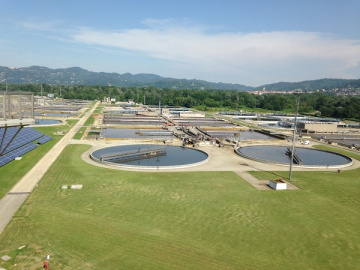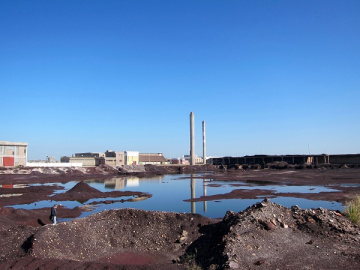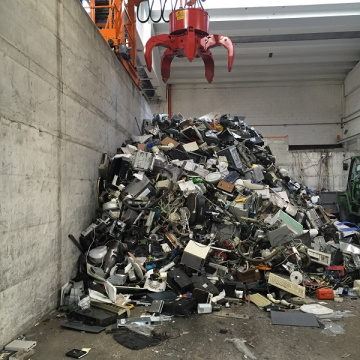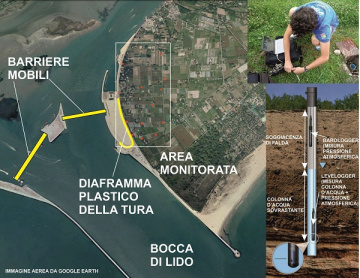ENVIRONMENTAL SANITARY ENGINEERING
The Environmental Sanitary Engineering faces the engineering aspects connected to the interactions of human activities and the ecosystems, in order to protect them, and to prevent and reclaim chemical, physical and biological contamination of the environmental matrices, using advanced methods and technologies. The basic and applied research is carried out following an integrated approach that includes laboratory, modeling and field activities, with consolidated national and international collaborations with experts in numerous other disciplines, both at academic and professional level.
The research is developed in the framework of numerous research projects (some examples here) and results in both a significant scientific production, including research papers published in prestigious international journals, and a notable technology transfer activity.
The main research topics are reported here (in brackets, the faculty names involved in each project):
- Drinkable Water treatment and production (Campo, Comino, Fiore, Panepinto, Riggio, Ruffino, Tiraferri, Zanetti) : physic-chemical and biological processes; desalination and freshwater production by means of polymeric and ceramic membranes; advanced oxidation processes; phytodepuration; sorption; water quality, disinfection by-products and emerging contaminants; coupling treatment plants with renewable energies.
- Wastewater treatment, reuse and management (Campo, Fiore, Panepinto, Riggio, Ruffino, Sethi, Tiraferri, Tosco, Zanetti): conventional and not conventional processes for civil and industrial wastewater, advanced oxidation processes, use of polymeric membranes, nature-based solutions (phytoremediation with hybrid and simple scheme, constructed wetlands, green walls); optimization of energy efficiency; sludge treatment; anaerobic digestion; analysis, monitoring and removal of microplastics; reuse of reclaimed wastewater for industrial, agricultural and drinking purposes; design and monitoring of mitigation measures (e-flows, fish passage solutions) of the environmental impacts of water withdrawal sites; valorization and extraction of nutrients, rare earth and energy by means of organic matter; liquid discharge zero.
- Groundwater engineering, soil and groundwater remediation (Bianco C., Casasso, Sethi, Tosco): characterization of aquifer systems; vulnerability and protection approach for water resources; geochemistry of surface water and groundwater; shallow geothermal energy: assessment of shallow geothermal resources, ground heat transport modeling for the design of borehole heat exchangers and groundwater heat pumps; colloid transport in porous media, long-term fate modeling and risk assessment; groundwater remediation: permeable reactive barriers, reactants for in situ oxidation/reduction, nanoremediation; managed aquifer recharge and soil aquifer treatment.
- Environmental micro and nanotechnologies (Bianco C., Sethi, Tiraferri, Tosco): micro- and nano-materialsfor groundwater remediation: optimization of nanoparticle suspensions, injection technologies, integrated laboratory/modeling approaches for field application design; micro- and nano-materials to mitigate spreading of agrochemicals in the subsoil: development and optimization of green nano-formulations, leaching and dispersion in the subsoil at laboratory and field scale.
- Environmental sanitary risk analysis and remediation of polluted sites (Panepinto, Ravina, Ruffino, Zanetti): employment of the risk analysis approach for the evaluation of toxic and carcinogenic risks and environmental risks of polluted sites, industrial processes and activities together with environmental sustainability assessment; forward and backward approach for the evaluation of sanitary and environmental compatibility; analysis of different software and implementation of the Rachel program; in situ and laboratory tests of remediation technologies determined on the basis of characterization plans and risk analysis procedure.
- Wastes (Fiore, Panepinto, Ruffino, Zanetti): physic-chemical, biological, thermal treatments; recovery of secondary raw materials, critical raw materials and energy from urban and industrial wastes; environmental sanitary risk analysis of the use of recycled products; landfills for non-hazardous and hazardous waste; circular economy principles applied in industries and urban context; analysis of environmental sustainability of reuse, recycle, recovery operations; technical, environmental and economic evaluation of new technologies.
- Green and renewable energies (Campo, Fiore, Panepinto, Riggio, Ruffino, Tiraferri, Zanetti): anaerobic digestion of biomasses with energetic purposes by means of wet, semi-wet and dry processes; production of e-methane through hydrogen bio-methanation in in-situ and ex situ anaerobic reactors; development of technologies for massive and monospecific use of algal strains for CO2 abatement; shallow geothermics; energy production from biomass plants by means of thermal treatments; water/energy nexus.
- Productive sites and local services and authorities (Campo, Fiore, Panepinto, Riggio, Ruffino, Zanetti):optimization of water and waste management cycles for the minimization of water consumption and of waste management and recovery, treatment of solid, liquid and gaseous emissions; adoption of Best Available Technologies; Atmospheric dispersion modeling of emissions and source apportionment; Environmental Management Systems (ISO14001-EMAS) and Integrated Management Systems in industries and local authorities.
- Environmental assessment (Comino, Bianco I., Blengini, Fiore,Panepinto, Ruffino, Zanetti): Life Cycle Assessment (LCA), Life Cycle Risk Analysis (LCRA), Ecosystems evaluation through ecological indicators; Environmental labels for products and services (EU Ecolabel, environmental product declarations, etc.); Environmental performance indicators, Emission trading and greenhouse gases quantification and reporting.
- Gaseous emissions and air pollution (Panepinto, Ravina, Riggio, Ruffino, Zanetti): evaluation of pollutant emissions produced by different kinds of industrial plants, modelling of the dispersion in atmosphere of gaseous emissions (by means of specific software) and evaluation of the sources; environmental compatibility of the contaminants emitted into the atmosphere by the use of dispersion models; evaluation of contribution of industrial emissions with application of multivariate statistical methods (PCS, GAC) to the footprint of sources. Assessment of the odor impact.
- Applications of phytotechnologies as tools for environmental assessment, remediation, and monitoring (Comino): 'learning by nature': green wall, phytodepuration, Nature-Based Solution (NBS)
Further information is available at the research groups’ websites:
- Groundwater Engineering Group: www.polito.it/groundwater
- Membrane-based water treatment Group: http://areeweb.polito.it/ensurewater
- Sanitary Engineering Group www.wearwe.polito.it
- LCA Group: https://areeweb.polito.it/ricerca/LCA
- Circular Economy@DIATI Group: http://www.circulareconomydiati.polito.it/
|
|
|
|
|
|
|






